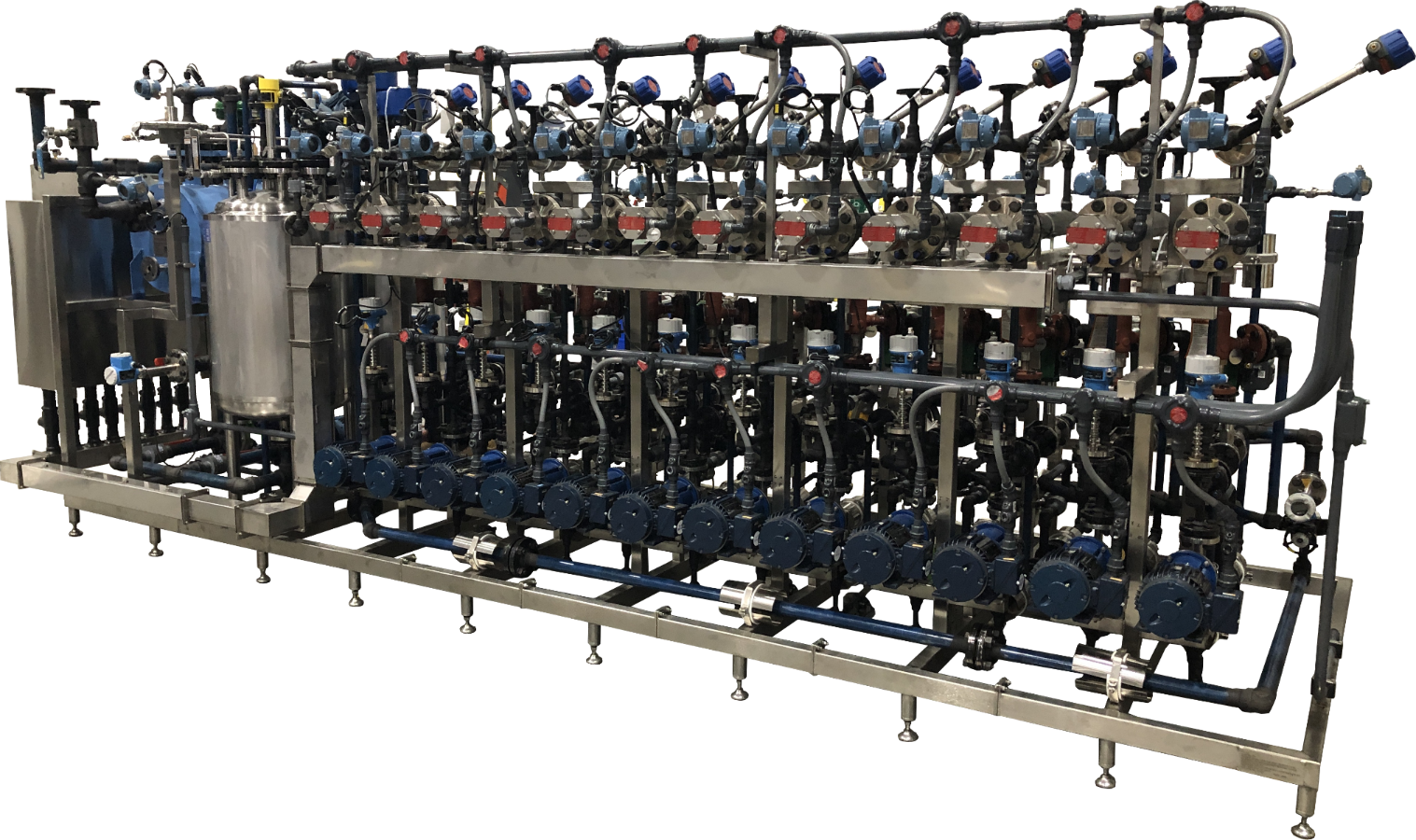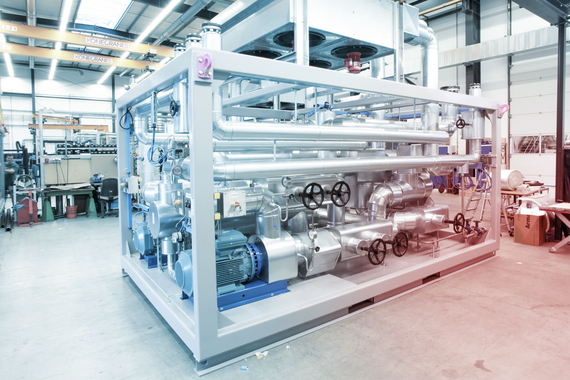Advancements in Heat Transfer Solutions: What You Required to Know for Ideal Performance
Advancements in Heat transfer systems are changing performance across various sectors. Advanced materials like graphene and nanofluids guarantee significant improvements in thermal conductivity. The assimilation of IoT and maker understanding offers possibilities for real-time monitoring and improved energy efficiency. The landscape of thermal administration is rapidly advancing. Understanding these advancements is essential for accomplishing perfect system performance and sustainability in the future. What specific innovations are shaping this transformation?
Arising Materials for Boosted Heat Transfer

Advanced Heat Exchanger Styles
While traditional Heat exchangers have served their function in various applications, advanced designs are now arising to satisfy the boosting needs for effectiveness and performance. These ingenious designs, such as plate, shell-and-tube, and finned-tube Heat exchangers, integrate boosted area and improved circulation patterns to increase thermal transfer prices. In enhancement, compact designs permit decreased space demands without endangering efficiency. Advanced materials, such as compounds and corrosion-resistant alloys, additionally enhance durability and performance under extreme problems. Simulation modern technologies and computational fluid dynamics are increasingly used to refine these layouts, making certain peak Heat transfer characteristics. As sectors look for to reduce power consumption and optimize output, the fostering of innovative Heat exchanger layouts is essential in attaining these goals.
The Duty of Nanotechnology in Heat Transfer
Nanotechnology plays a necessary function in enhancing thermal conductivity within Heat transfer systems. By manipulating materials at the nanoscale, researchers have accomplished considerable enhancements in power effectiveness. These developments not only optimize efficiency however additionally add to more lasting energy remedies.
Enhanced Thermal Conductivity
Substantial developments in thermal conductivity have actually emerged via the application of nanotechnology, changing Heat transfer systems throughout various markets. By integrating nanoparticles right into Heat transfer fluids and products, scientists have attained impressive increases in thermal conductivity. These nanoparticles, such as carbon nanotubes, graphene, and metal oxides, enhance the Heat transfer residential or commercial properties because of their high area and unique thermal features. The resulting composites display enhanced efficiency in applications varying from electronics cooling down systems to renewable power technologies. Furthermore, the capability to tailor the size, shape, and structure of nanoparticles permits maximized thermal administration solutions. As an outcome, nanotechnology remains to play an essential duty in the development of extra effective and reliable Heat transfer systems, leading the way for improved industrial applications.
Power Performance Improvements

Assimilation of IoT in Heat Transfer Equipments
The assimilation of IoT in Heat transfer systems presents the implementation of clever sensors that enhance functional efficiency. These sensing units allow real-time information monitoring, permitting instant changes and optimizations. This technical innovation has the prospective to considerably enhance efficiency and energy administration in More Help Heat transfer applications.
Smart Sensors Execution
As Heat transfer systems evolve, the combination of smart sensing units via the Internet of Things (IoT) has actually become a transformative technique. These sensors enable real-time monitoring of pressure, flow, and temperature rates, enhancing system performance and integrity. By accumulating and transferring data, they facilitate positive upkeep, lowering the danger of system failures. In addition, clever sensing units add to power savings by refining operational criteria based upon environmental conditions. Their capacity to evaluate patterns and abnormalities enables educated decision-making, making certain peak performance of Heat transfer systems. As industries progressively embrace this innovation, the application of clever sensing units stands to transform how Heat transfer systems are managed, leading the way for greater sustainability and enhanced performance results.
Real-Time Information Tracking
Exactly how can real-time information keeping an eye on improve the effectiveness of Heat transfer systems? By integrating Internet of Things (IoT) modern technology, Heat transfer systems can leverage continuous data collection from smart sensors. This real-time monitoring enables instant analysis of more info here stress, flow, and temperature level prices, allowing operators to identify inadequacies promptly. Subsequently, modifications can be made to enhance performance, reduce energy intake, and extend equipment life expectancy. Additionally, predictive maintenance can be executed, reducing unanticipated downtime and costly repair work. The capacity to visualize efficiency metrics through control panels boosts decision-making, cultivating an aggressive technique to system management. Eventually, real-time information keeping an eye on not just improves functional efficiency but additionally adds to sustainability objectives within industrial processes.
Energy Efficiency and Sustainability Trends
Energy effectiveness and sustainability trends are improving the landscape of Heat transfer systems, driving development and conformity throughout various industries. Organizations are significantly focusing on energy-efficient layouts to lower operational expenses and lessen environmental impacts. The assimilation of renewable power resources is coming to be much more widespread, allowing Heat transfer systems to run sustainably while fulfilling regulative demands. In addition, improvements in modern technologies and products advertise lower energy consumption and boost general performance. Lifecycle evaluations are also getting traction, permitting firms to review the ecological effect of Heat transfer systems from manufacturing to disposal. This concentrate on sustainability not just sustains company responsibility but likewise positions organizations competitively in a market where consumers significantly prefer environmentally friendly options. Power performance and sustainability remain important factors to consider for future growths in Heat transfer technology.
Advancements in Thermal Monitoring Solutions
While the demand for efficient Heat transfer remains to climb, innovations in thermal management options are emerging to address both performance and sustainability difficulties. Advanced materials, such as phase adjustment products and nanofluids, are being created to improve Heat transfer performance - DVS Heat Transfer Systems. These products improve thermal conductivity and allow for better temperature policy in various applications. In addition, innovations like active thermal control systems are acquiring grip, allowing real-time modifications to handle Heat flow effectively. These systems add to energy cost savings and reduce the environmental effect of thermal procedures. The integration of IoT in thermal administration helps with monitoring and anticipating upkeep, making certain optimized performance and longevity of Heat transfer systems. Overall, these advancements stand for considerable strides toward more lasting thermal administration practices
Future Instructions in Heat Transfer Innovation
Arising innovations in thermal management remedies signal an appealing future for Heat transfer technology. Scientists are increasingly concentrating on developing materials with remarkable thermal conductivity and boosted energy effectiveness. Developments such as nanofluids, which contain put on hold nanoparticles, offer significant improvements in Heat transfer performance. In addition, the combination of clever products that adjust to differing temperature level problems is acquiring traction, enabling even more effective and receptive systems. The increase of additive production strategies is also enabling the layout of intricate Heat exchanger geometries that maximize liquid circulation. Moreover, the application of machine knowing algorithms is expected to transform the optimization of Heat transfer systems, promoting anticipating upkeep and efficiency enhancement. Jointly, these advancements are poised to change the landscape of Heat transfer innovations in numerous sectors.

Often Asked Inquiries

Exactly how Do I Select the Right Heat Transfer System for My Application?
Selecting the right Heat transfer system entails examining application demands, consisting of temperature level ranges, liquid residential properties, and efficiency requirements. Assessing system types, maintenance considerations, and cost-effectiveness also plays an essential role in making an informed decision.
What Are the Maintenance Requirements for Advanced Heat Exchangers?
Maintenance requirements for advanced Heat exchangers generally include regular evaluations, monitoring for leaks, cleansing of surface areas, and ensuring perfect flow prices. Abiding by producer guidelines warranties efficient operation and lengthens the tools's lifespan.
Just How Do Ecological Elements Impact Heat Transfer Effectiveness?
Environmental variables substantially affect Heat transfer efficiency. Variations in moisture, airflow, and temperature level influence thermal conductivity and convective Heat transfer, ultimately influencing system performance and necessitating factor to consider during the design and operation of Heat transfer systems.
What Safety And Security Standards Apply to Heat Transfer Systems?
Safety requirements for Heat transfer systems commonly consist of guidelines from companies such as ASME and ASTM. DVS Heat Transfer Systems. These requirements address products, layout, and operational methods to assure reliability, effectiveness, and defense versus hazards in numerous applications
How Can I Fix Usual Heat Transfer System Issues?
Repairing common Heat transfer system problems includes checking for leaks, making certain proper fluid flow, checking insulation stability, and validating temperature differentials. Determining these aspects can aid maintain system efficiency and protect against further issues.
Nanotechnology plays a necessary function in boosting thermal conductivity within Heat transfer systems. Considerable improvements in thermal conductivity visit this website have emerged via the application of nanotechnology, revolutionizing Heat transfer systems across different markets. Improvements in thermal conductivity with nanotechnology have actually led the method for exceptional enhancements in energy efficiency within Heat transfer systems. Power performance and sustainability trends are improving the landscape of Heat transfer systems, driving development and compliance across numerous industries. The combination of IoT in thermal administration helps with tracking and anticipating maintenance, ensuring maximized efficiency and longevity of Heat transfer systems.